Design thinking to intelligent design. A recap
Let's explore the state of design intelligence to date, shall we.
Recent advancements in artificial intelligence and digital twin simulation of complex phenomena have enabled software to play an active, participatory role in the invention of form.
As a use case Project Dreamcatcher is an experimental design platform with focused research probes into generative design systems.
Arguments for the incorporation of AI into design often default to concerns around replacing the human designer. While many elements that are commonly modeled from scratch such as brackets, adapters and stiffeners may be created more effectively by a system such as Dreamcatcher, complex elements and aspects that are difficult to quantify will require new types of interaction to leverage human intuition and computational rigor in partnership.
Design intelligence to me breaths at the intersection of hyper tech, humane empathy and organic sustainability.
The epitome of intelligent design could be our ability to design a utopia where machines compliment our intuition and emotions.
An intelligent design benchmark for the augmented age should be creating a safe, democratized and open techonomies or help reduce global inequality in terms of distribution of power.
Designing only for what mankind truly needs and solving problems faced by millions of humans is design intelligence.

Design intelligence could be designing optimal global strategies to tackle the side effects of cognitive and creative automation and our machines continue to outsmart us.
Design Intelligence is what moves everything toward a state of perfection. It’s what the creative process aims to achieve. When a design is optimal, it means that it’s better than the last, but not as good as the next. Designs can never be perfect, but you can always remove imperfections.
In Harmut Esslinger’s book, a fine line, he articulates the need for a focused creative and innovation strategy. “New ideas are mandatory to innovation, but they’re only as effective as the objectives used to filter to them and the processes used to develop them.” Thinking like a designer amplifies the creative process and taps into the humanistic elements of experience.
This is executed, again, through an integrated approach. IDEO calls this approach design thinking. Frog calls it design strategy. Both provide businesses that are not trained as designers to utilize creativity to solve a vast range of challenges. It approaches the problem from the human experience, asks what is possible through all variables, explores technology and available resources, and integrates various models to conceive a more innovative solution that may not have revealed itself through traditional analytic processes.
Design intelligence focuses on one’s intuition and experiential perceptions to understand challenges and achieve goals. This approach can also be applied to business processes. Meaning in derived from all possible communications, even beyond words and symbols. Design thinking integrates organized analytical thinking with creative and emotional drivers.
An approach with both elements can provide new ways to solve problems. Design focuses on aesthetic, structure, and elegance. I provide strategies in which businesses can operate in more cohesive ways, through more elegant and efficient operational processes.
Curated by Maisam Bokhari
Ref. www.mindshare.com
Congratulations @neocognito! You have completed some achievement on Steemit and have been rewarded with new badge(s) :
Click on any badge to view your own Board of Honor on SteemitBoard.
For more information about SteemitBoard, click here
If you no longer want to receive notifications, reply to this comment with the word
STOPGreat! I'am excited